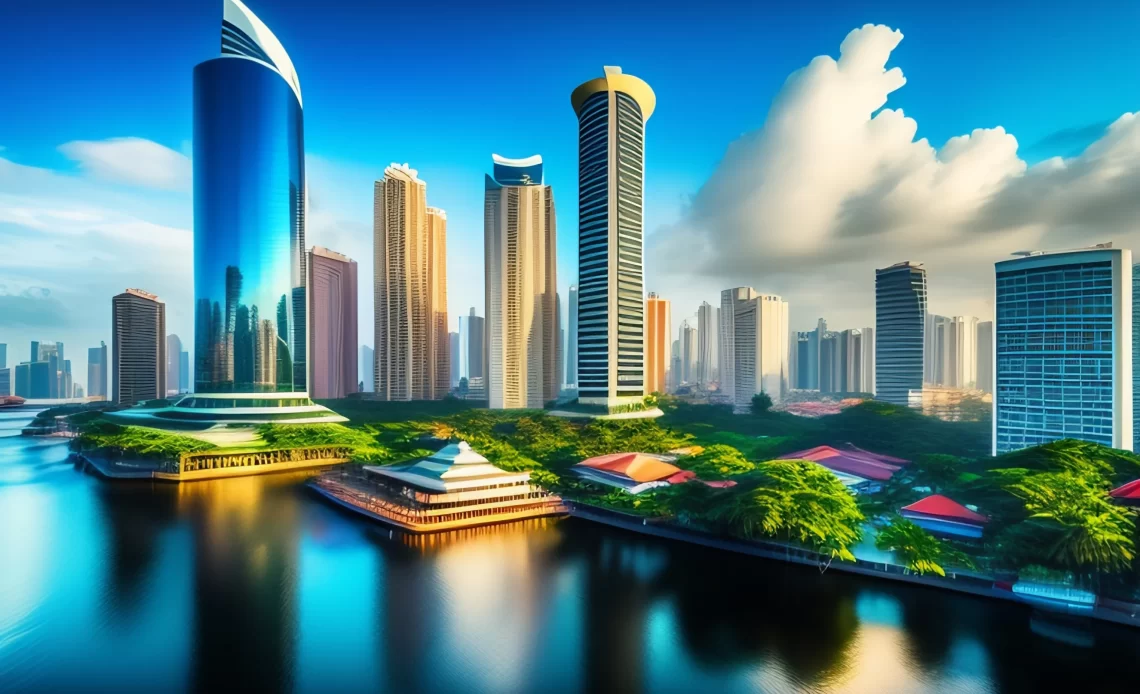Australia: a vast and varied continent that seamlessly fuses the modernity of it’s buzzing urban hubs with the raw beauty of it’s ancient landscapes. Stretching from sun-soaked coasts to rugged outback, it’s a land of contrasts, where every city tells a story and every corner holds a secret waiting to be unveiled. Whether you’re drawn to the iconic Sydney Opera House, the artistic heart of Melbourne or the relaxed vibes of Adelaide’s beaches, Australia offers a mosaic of experiences. In this atricle, we go deep into the heart of Australia’s most captivating cities, providing insights to help you grt on an unforgettable tour. Lets get in and let the Australian adventure begin!
Sydney: The Harbor City
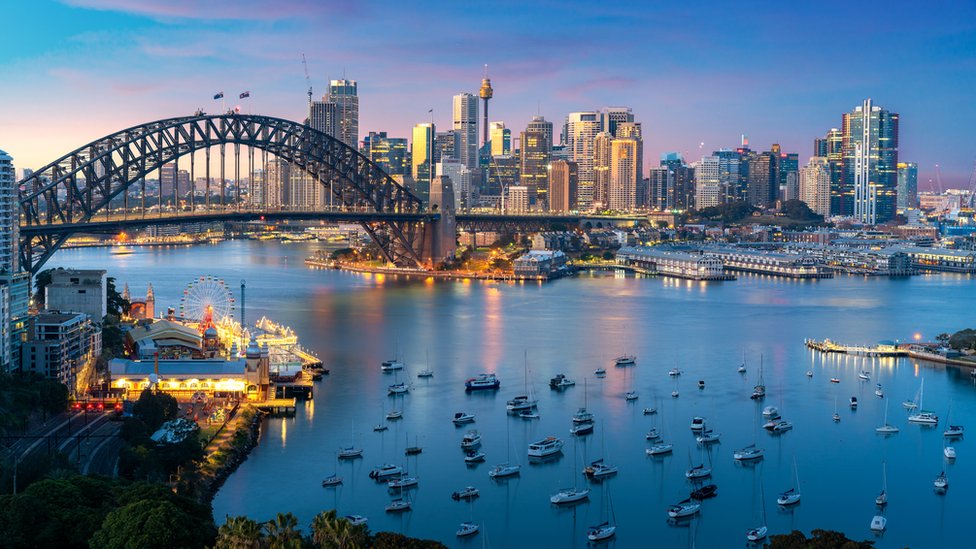
Steeped in history, adorned by modernity and punctuated by nature’s marvels, Sydney stands as a testament to Australia’s rich past and it’s ambitious future. This iconic city, with it’s intertwining lanes and azure waters, promises an enchanting mix of the old and the new.
How to Get There:
Sydney’s Kingsford Smith Airport (SYD): Located approximately 8 kilometers south of the city center, it’s Australia’s busiest airport and serves as the primary gateway for international travelers. Once you land, there are multiple ways to reach downtown:
- Train: The Airport Link service provides a quick 13-minute journey to the heart of the city.
- Bus & Shuttle: Numerous shuttle services and public buses can drop you at various parts of Sydney.
- Taxi & Ride-sharing: Both are readily available, but ensure you’re using authorized service providers.
Famous Places:
- Sydney Opera House: This UNESCO World Heritage site, with it’s iconic shell-like structures, isn’t just an architectural wonder but a hub for performing arts. Attend an opera, theater or symphony performance for a cultured evening.
- Sydney Harbour Bridge: Besides being a crucial transportation route, it offers the ‘BridgeClimb’ experience, granting panoramic views of the harbor and skyline.
- Bondi Beach: Known globally for it’s golden sands and surfing waves, Bondi is the epitome of Sydney’s beach culture. The coastal walk from Bondi to Coogee offers breathtaking ocean views.
Things to Do:
- Harbor Cruise: Delve into Sydney’s marine allure by taking a ferry or luxury cruise. The Manly ferry ride offers scenic views at a budget price.
- Taronga Zoo: Set against the backdrop of Sydney Harbour, this zoo offers a close encounter with Australia’s unique wildlife and a cable car experience that provides an aerial view of the animals’ habitats.
- The Rocks: This historic area, with cobbled pathways and colonial buildings, tells tales of Sydney’s early settlers. Engage in a guided walking tour to discover stories of Sydney’s convict past.
- Royal Botanic Garden: A serene escape in the city’s heart, these gardens offer themed sections showcasing Australia’s diverse plant life and some unique bird species.
Expenses:
Sydney, being a cosmopolitan hub, can lean towards the pricier side. Here’s a breakdown:
- Accommodation: Luxury hotels can cost AUD$250-500/night, mid-range options hover around AUD$100-250 and budget accommodations like hostels might set you back AUD$30-80.
- Food: Sydney boasts a culinary landscape reflecting it’s multicultural populace. An average meal at a restaurant can cost around AUD$20-50, while gourmet dining can be AUD$100+.
- Transport: The Opal card system is used across public transport (trains, buses, ferries). Daily fare caps at AUD$16.10 for adults, but Sunday has a special AUD$2.80 cap.
- Activities: Entry fees for attractions vary. For instance, an adult ticket to the Taronga Zoo is around AUD$44 and the Sydney Opera House tour can cost around AUD$42.
Overall, for a moderate experience encompassing decent accommodation, meals, transport and activities, a daily budget of AUD$200-300 is a reasonable estimate. However, your expenses can vary based on personal preferences.
Melbourne: Australia’s Cultural Capital
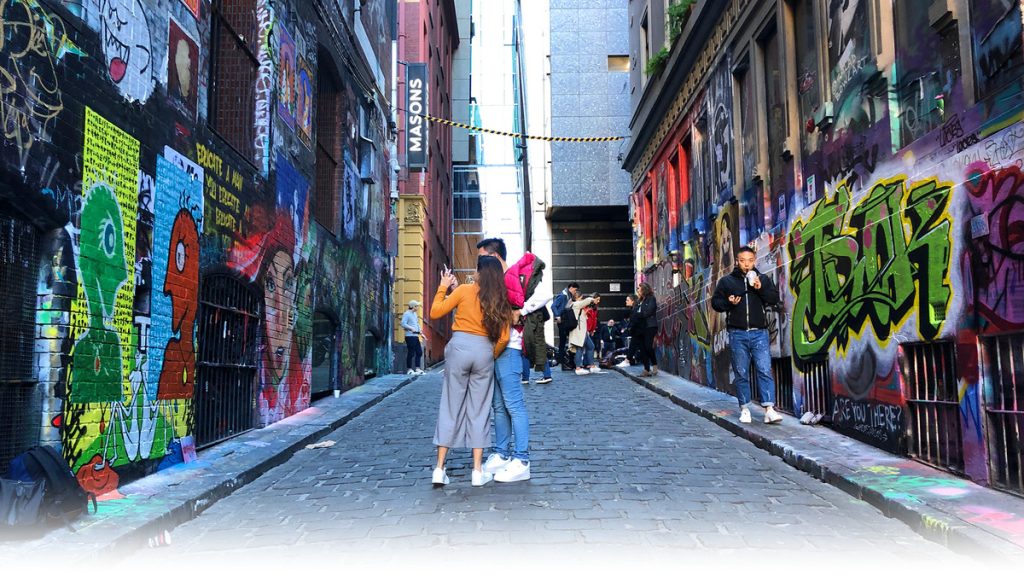
An eclectic fusion of architectural grandeur, culinary delights and vibrant street life, Melbourne is Australia’s hub of art, fashion and sport. Embracing it’s rich heritage while continually evolving, this city offers experiences that resonate with both the heart and soul.
How to Get There:
Melbourne Tullamarine Airport (MEL): Positioned about 23 kilometers northwest of the city center, this airport connects Melbourne to the world. Once you touch down, numerous options await to transport you into the city:
- SkyBus: Operating 24/7, SkyBus provides a direct route from the airport to the city in just 30 minutes.
- Taxi & Ride-sharing: Both are readily accessible, ensuring a private commute if preferred. Always opt for registered services.
- Public Buses: They offer a cheaper but longer alternative to the city.
Famous Places:
- Federation Square: The cultural and event nucleus of Melbourne, this modern piazza hosts art exhibitions, performances and public events. The edgy design contrasts beautifully with the city’s Victorian architecture.
- Royal Botanic Gardens: Spanning over 38 hectares, these gardens are an oasis of calm, housing a plethora of global plant species. The Aboriginal Heritage Walk here is highly recommended for insights into indigenous culture.
- Melbourne Cricket Ground (MCG): One of the world’s premier sports stadiums, MCG is hallowed ground for cricket fans. Even if you’re not attending a match, the guided tour is an enriching experience.
Things to Do:
- Coffee Culture: Often dubbed the coffee capital of the world, Melbourne takes it’s brew seriously. Discover charming cafes in laneways like Degraves Street and Hardware Lane.
- Street Art Tour: Melbourne’s laneways are canvases showcasing vibrant and dynamic street art. Hosier Lane, AC/DC Lane and Duckboard Place are must-visits. Join a guided tour for in-depth understanding.
- Queen Victoria Market: A bustling hub for fresh produce, gourmet foods and unique souvenirs, spending a morning or evening here is quintessentially Melbourne.
- Tram Ride on Route 35: Experience the city’s heritage by hopping onto the free City Circle Tram, offering commentary on key city landmarks.
Expenses:
Melbourne’s cosmopolitan nature means a varied range of expenses, much like Sydney. Here’s an estimate:
- Accommodation: High-end hotels might cost AUD$200-450/night. Mid-tier accommodations average AUD$100-200, while hostels and budget lodgings range from AUD$30-70.
- Food: Renowned for it’s culinary scene, an average meal can set you back AUD$20-40, with upscale dining venues charging AUD$100 or more.
- Transport: The myki card covers trams, trains and buses. Daily fare caps at AUD$9.00 for adults. Remember, trams within the city’s central grid are free.
- Activities: Costs vary. A guided tour of the MCG might be around AUD$25, while most street art laneways can be explored for free.
Factoring in accommodations, meals, transport and activities, planning a daily budget of AUD$200-300 in Melbourne is a sound approach. Nonetheless, personal preferences can adjust this estimate up or down.
Brisbane: Sunshine State’s Urban Gem
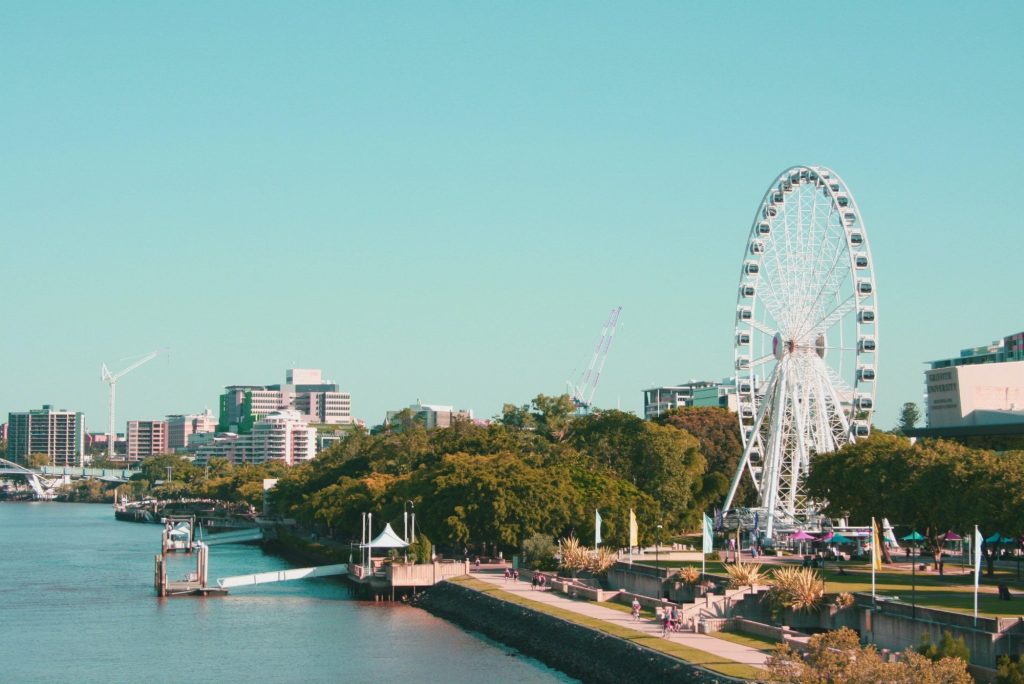
Brisbane, with it’s balmy weather, thriving arts scene and river-hugging landscapes, offers a warm Queensland welcome. A confluence of modernity and lush nature, it’s an urban jewel that boasts of serene parks, cultural epicenters and exciting adventures.
How to Get There:
Brisbane Airport (BNE): Situated around 17 kilometers northeast of the city center, it’s the third busiest airport in Australia. Commuting from the airport to the city is streamlined by various transport options:
- Airtrain: This service runs from the airport to the city, with a journey time of roughly 20 minutes.
- Taxi & Ride-sharing: These services offer a direct and comfortable route to your destination. It’s essential to utilize licensed providers for safety and reliability.
- Public Buses: The Con-x-ion shuttle bus offers services from the airport to various parts of the city.
Famous Places:
- South Bank Parklands: This recreational paradise on the southern banks of the Brisbane River offers lush gardens, eateries and even a man-made beach. Events and festivals frequently light up this space.
- Brisbane Botanic Gardens: Located at the foot of Mount Coot-tha, these gardens boast native plants and beautiful lake views. The Sir Thomas Brisbane Planetarium within the gardens offers a celestial experience.
- Story Bridge: An iconic landmark, this heritage-listed cantilever bridge provides breathtaking views of the city and river.
Things to Do:
- Story Bridge Adventure Climb: For adrenaline seekers, climbing the Story Bridge not only pumps the heart but also provides panoramic views of the cityscape.
- South Bank’s Streets Beach: Experience the beach in the heart of the city. This man-made lagoon, surrounded by white sand and palm trees, offers a refreshing break.
- Moreton Island Exploration: Just a ferry ride away, Moreton Island is a sanctuary of sandy dunes, shipwrecks and clear waters. Try snorkeling, sand tobogganing or simply relax on the pristine beaches.
- River Cruise: Going on a scenic river cruise on the Brisbane River to view the city’s skyline and appreciate it’s riverside charm.
Expenses:
Brisbane, while being a major city, can sometimes be more affordable than it’s southern counterparts:
- Accommodation: Luxury hotels may range from AUD$180-350/night. Medium-ranged spots could cost AUD$90-180 and budget stays, like hostels, come in at around AUD$25-60.
- Food: Brisbane’s burgeoning food scene means diverse options. Average meals might cost AUD$15-35, with higher-end places demanding around AUD$80+.
- Transport: The go card is handy for buses, trains and ferries. Adult daily fares cap at AUD$10.00 within zones 1-2.
- Activities: While many parks and gardens are free, specific activities, like the Story Bridge climb, can cost around AUD$100.
Given the spectrum of experiences, setting a daily budget of AUD$150-250 in Brisbane should be adequate. However, always tailor expenses to individual tastes and preferences.
Perth: Western Australia’s Vibrant Hub
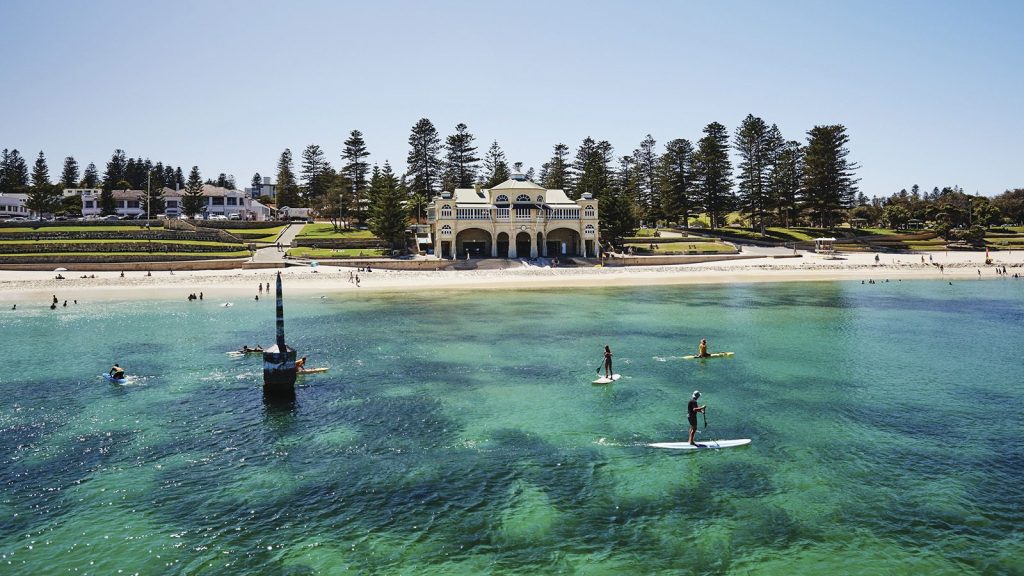
Nestled on the edge of the Indian Ocean, Perth embodies the essence of Australian modernity blended with natural beauty. As the sunniest state capital, Perth beams with urban sophistication, sprawling parks and a breezy coastline. It’s a city where the blue of the sky harmoniously meets the golden hues of the land.
How to Get There:
Perth Airport (PER): Located about 12 kilometers east of downtown Perth, this airport links Western Australia to both global and domestic locales. Transport from the airport to the city center is seamless:
- Airport Shuttle: Connect services offer rides from the airport to major city points and hotels.
- Taxi & Ride-sharing: Reliable and convenient, these services can transport you straight to your desired destination in the city.
- Public Buses: Transperth operates routes connecting the airport to the city, offering a budget-friendly travel option.
Famous Places:
- Kings Park: One of the world’s largest inner-city parks, Kings Park overlooks Perth’s cityscape and the Swan River. It’s an urban retreat with botanical gardens, war memorials and indigenous bushland.
- Perth Mint: Dive into the world of gold at this operational mint, which offers guided tours showcasing Australia’s gold mining history, gold pouring demonstrations and precious metal coin exhibits.
- Fremantle: This historic port town, affectionately known as “Freo,” brims with Victorian architecture, museums and a bustling market atmosphere.
Things to Do:
- Swan River Cruise: Journeying on the Swan River offers picturesque views of Perth’s skyline, affluent suburbs and leafy promenades. Opt for themed cruises like wine tasting or wildlife watching for a specialized experience.
- Historic Fremantle Exploration: Wander the streets of Fremantle to discover it’s maritime past. The Fremantle Prison, with it’s intriguing tales of convicts, is a must-visit.
- Cottesloe Beach Relaxation: This iconic Perth beach, with it’s soft sands and azure waters, is perfect for sunbathing, swimming or watching a radiant sunset.
- Art Gallery of Western Australia: Located in the Perth Cultural Centre, this gallery showcases indigenous, local and international art, offering a deep dive into the region’s rich artistic tapestry.
Expenses:
Perth, as Western Australia’s crown jewel, has a wide range of expenses:
- Accommodation: Upscale establishments might be priced between AUD$180-350/night. Mid-range hotels could be around AUD$90-175, while hostels and budget accommodations hover between AUD$25-60.
- Food: With a thriving culinary scene, Perth offers meals ranging from AUD$15-40 on average and gourmet dining experiences can exceed AUD$90.
- Transport: The SmartRider card grants access to Perth’s public transport, including buses, trains and ferries. Expect a daily fare cap of about AUD$12.80 for short journeys.
- Activities: Entry fees for attractions like the Perth Mint might set you back around AUD$30. Many of Perth’s beaches and parks, however, can be enjoyed for free.
Considering all factors, maintaining a daily budget of AUD$150-250 in Perth will allow for a mix of activities, dining and accommodations. Adjustments can be made based on individual preferences.
Adelaide: The Wine Capital
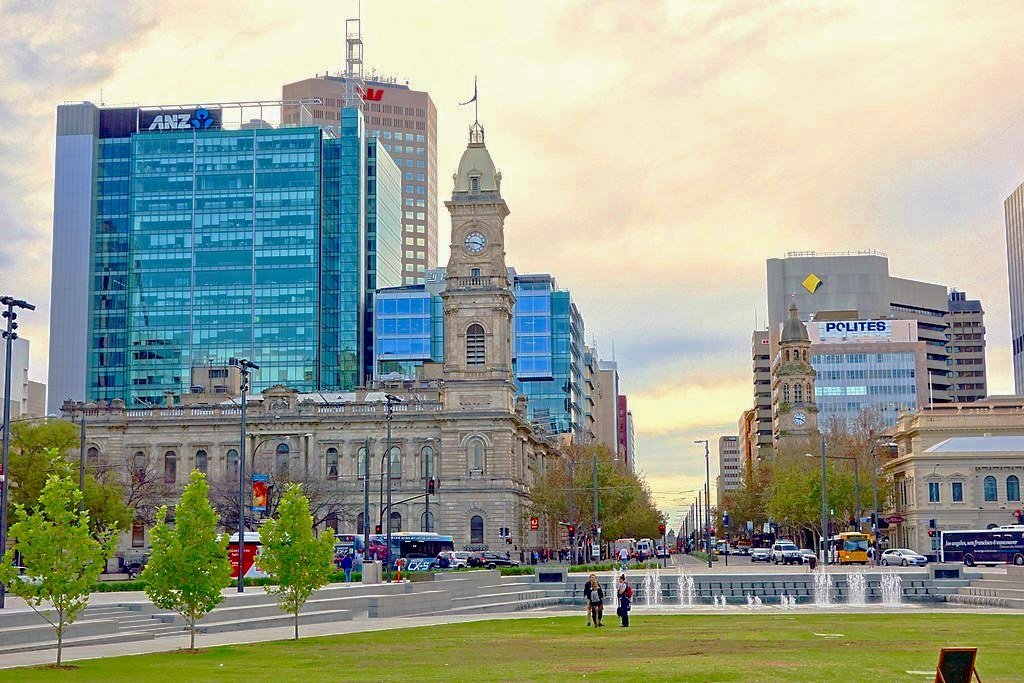
Often termed the “City of Churches,” Adelaide’s allure extends far beyond it’s historic cathedrals. Nestled between rugged coastlines and verdant hills, Adelaide boasts a rich cultural heritage, renowned wine regions and an understated charm. A fusion of European flair and Australian spirit, Adelaide promises a unique concoction of experiences for it’s visitors.
How to Get There:
Adelaide Airport (ADL): Situated roughly 6 kilometers west of the city center, Adelaide Airport is South Australia’s primary aviation gateway. Making your way from the airport to the heart of Adelaide is straightforward:
- Airport Shuttle: The Skylink Adelaide shuttle service ferries passengers between the airport and several key city spots.
- Taxi & Ride-sharing: Offering a direct route to your chosen city point, taxis and ride-sharing platforms like Uber are widely available outside the terminal.
- Public Buses: The JetExpress and JetBus services, operated by Adelaide Metro, provide a cost-effective means of transport from the airport.
Famous Places:
- Adelaide Oval: A celebrated sports venue, this oval hosts cricket matches, Australian rules football and even concerts. With it’s blend of historic and modern architecture, it’s also a sightseeing highlight.
- Adelaide Zoo: Home to over 3,000 animals, this zoo is a favorite among families. The giant pandas, a major attraction, are sure to captivate visitors.
- Glenelg Beach: A short tram ride from the city, Glenelg offers golden sands, tranquil waters and a vibrant jetty road brimming with eateries and shops.
Things to Do:
- Barossa Valley Wine Tour: Just an hour’s drive from Adelaide, the Barossa Valley is synonymous with world-class wines. Immerse yourself in the local viticulture, tasting signature Shiraz wines and learning about winemaking traditions.
- Dolphin Swim in Glenelg: Going on a unique aquatic adventure by swimming alongside friendly dolphins in the clear waters off Glenelg.
- Adelaide Oval Experience: Whether attending a riveting cricket match, footy game or simply taking a guided behind-the-scenes tour, the Oval promises memories that will last a lifetime.
- Central Market Exploration: Revel in South Australia’s fresh produce and gourmet delights by navigating the bustling stalls of Adelaide’s iconic market.
Expenses:
As South Australia’s centerpiece, Adelaide offers a spectrum of expenses:
- Accommodation: Luxury hotels may command prices between AUD$170-320/night. Mid-tier options could fall within AUD$85-160, while budget lodgings like hostels may range from AUD$25-55.
- Food: The city’s culinary scene is varied, with meals averaging AUD$15-35. Exclusive dining venues might charge upwards of AUD$85 for a gourmet experience.
- Transport: The Metrocard is Adelaide’s ticket to public transport. An average day’s travel, utilizing buses, trams and trains, might cost up to AUD$10.60.
- Activities: Wine tours in the Barossa can vary, with some priced around AUD$150, while beach visits and Oval matches might differ based on the event.
Given the array of experiences on offer, setting aside AUD$150-230 per day in Adelaide should ensure a comfortable stay, encompassing meals, activities and accommodations. As always, adjust the budget to align with individual choices and desires.
FAQs
Most Australian cities have a robust public transportation system, including buses, trams and trains. Taxis and ride-sharing services like Uber are also widely available.
Australians appreciate politeness and patience, especially in queues. Tipping is not customary but is appreciated for excellent service. Saying “please” and “thank you” is standard practice.
Yes, English is the official language of Australia. However, given it’s multicultural population, you’ll also hear many other languages, especially in major cities.
The official currency is the Australian Dollar (AUD).
Major credit and debit cards are widely accepted in Australia, especially in urban areas. However, it’s a good idea to carry some cash for smaller establishments or remote areas.
While Australia is known for it’s unique wildlife, encounters with dangerous animals in urban areas are rare. It’s essential to be cautious and informed, especially when visiting natural habitats or going for bushwalks.
Generally, no special vaccinations are required for Australia. However, always consult with your doctor or travel clinic before any trip
Conclusion
Australia, with it’s expansive landscapes, vibrant cities and rich cultural tapestry, promises an unparalleled travel experience. From the iconic Sydney Harbour to the artistic lanes of Melbourne, the sun-kissed beaches of Perth to Adelaide’s vinous valleys, every city offers a unique slice of Australian life. Whether you’re a nature lovers, culture vulture or just looking to relax by the beach, the Land Down Under caters to every whim and fancy. This guide has aimed to provide insights into the top cities to explore, but remember, Australia’s essence is in it’s diversity. The adventures that await are as vast as the continent itself. So pack your bags and let the Australian journey beckon! Safe travels and happy exploring!

